Risk Assessment of Underground Tunnel Engineering Based on Pythagorean Fuzzy Sets and Bayesian Networks
Abstract
:1. Introduction
2. Risk Evaluation Methodology
2.1. Delphi Method
2.2. Pythagorean Fuzzy Set Theory
2.3. Bayesian Network
3. Construction of Underground Tunnel Engineering Construction Risk Model
3.1. Risk Assessment Indicator System Construction
3.2. Construction of a Bayesian Network Risk Assessment Model Based on Pythagorean Fuzzy Sets
4. Practical Engineering Application and Analysis
4.1. Project Overview
4.2. Construction Risk Assessment
4.2.1. Application of Pythagorean Fuzzy Numbers
4.2.2. Risk Probability Analysis of Bayesian Networks
4.3. Construction Risk Prevention and Control Measures
5. Conclusions and Discussion
Author Contributions
Funding
Data Availability Statement
Conflicts of Interest
References
- Ameyaw, E.E.; Hu, Y.; Shan, M.; Chan, A.P.C.; Le, Y. Application of delphi method in construction engineering and management research: A quantitative perspective. J. Civ. Eng. Manag. 2016, 22, 991–1000. [Google Scholar] [CrossRef]
- Hesse, A.A.; Atadero, R.A.; Ozbek, M.E. Using Expert Opinion to Quantify Uncertainty in and Cost of Using Nondestructive Evaluation on Bridges. Adv. Civ. Eng. 2017, 2017, 7925193. [Google Scholar] [CrossRef]
- Zhang, L.; Wang, Y.; Zhang, J.; Zhang, S.; Guo, Q. Rockfall hazard assessment of the slope of Mogao Grottoes, China based on AHP, F-AHP and AHP-TOPSIS. Environ. Earth Sci. 2022, 81, 377. [Google Scholar] [CrossRef]
- Maiers, J.; Sherif, Y.S. Applications of fuzzy set theory. IEEE Trans. Syst. Man Cybern. 1985, SMC-15, 175–189. [Google Scholar] [CrossRef]
- Naji, K.K.; Gunduz, M.; Alhenzab, F.; Al-Hababi, H.; Al-Qahtani, A. Assessing the Digital Transformation Readiness of the Construction Industry Utiliz-ing the Delphi Method. Buildings 2024, 14, 601. [Google Scholar] [CrossRef]
- Abramov, I.; AlZaidi, Z.A.K. Evaluation of the Effective Functioning of Construction Enterprises in the Conditions of Occur-rence of Diverse Risk Factors. Buildings 2023, 13, 995. [Google Scholar] [CrossRef]
- Lapidus, A.; Abramov, I.; Kuzmina, T.; Abramova, A.; AlZaidi, Z.A.K. Study of the Sustainable Functioning of Construction Companies in the Conditions of Risk Factors. Buildings 2023, 13, 2282. [Google Scholar] [CrossRef]
- Zhu, Y. A Prediction Method of Enterprise Evaluation Based on Genetic Taboo Algorithm. In Proceedings of the 2023 IEEE 15th International Conference on Computational Intelligence and Communication Networks (CICN), Bangkok, Thailand, 22–23 December 2023; pp. 74–79. [Google Scholar]
- Khan, S.; Pervez, A.; Zhang, Y.; Ahmad, S.; Sharifzada, H.; Ismail, E.A.; Awwad, F.A. Comprehensive risk assessment of Pakistan railway network: A semi-quantitative risk matrix approach. Heliyon 2024, 10, e32682. [Google Scholar] [CrossRef]
- Wu, H.; Wang, J.; Feng, J.; Liu, D.; Liu, S. Research on the decision-making of flood prevention emergency plans during reservoir con-struction based on generalized intuitionistic fuzzy soft sets and TOPSIS. Water Supply 2020, 20, 3665–3675. [Google Scholar] [CrossRef]
- Ansari, R.; Dehghani, P.; Mahdikhani, M.; Jeong, J. A Novel Safety Risk Assessment Based on Fuzzy Set Theory and Decision Methods in High-Rise Buildings. Buildings 2022, 12, 2126. [Google Scholar] [CrossRef]
- Ilczuk, P.; Kycko, M. Risk Assessment in the Design of Railroad Control Command and Signaling Devices Using Fuzzy Sets. Appl. Sci. 2023, 13, 12460. [Google Scholar] [CrossRef]
- Gul, M. Application of Pythagorean fuzzy AHP and VIKOR methods in occupational health and safety risk assessment: The case of a gun and rifle barrel external surface oxidation and colouring unit. Int. J. Occup. Saf. Ergon. 2018, 26, 705–718. [Google Scholar] [CrossRef] [PubMed]
- Alık, A. A novel Pythagorean fuzzy AHP and fuzzy TOPSIS methodology for green supplier selection in the Industry 4.0 era. Soft Comput. 2021, 25, 2253–2265. [Google Scholar]
- Chen, Q.Y.; Liu, H.C.; Wang, J.H.; Shi, H. New model for occupational health and safety risk assessment based on Fermatean fuzzy linguistic sets and CoCoSo approach. Appl. Soft Comput. 2022, 126, 109262. [Google Scholar] [CrossRef]
- Shete, P.C.; Ansari, Z.N.; Kant, R. A Pythagorean fuzzy AHP approach and its application to evaluate the enablers of sustainable supply chain innovation. Sustain. Prod. Consum. 2020, 23, 77–93. [Google Scholar] [CrossRef]
- Ak, M.F.; Gul, M. AHP–TOPSIS integration extended with Pythagorean fuzzy sets for information security risk analysis. Com-Plex Intell. Syst. 2019, 5, 113–126. [Google Scholar] [CrossRef]
- Wang, L.; Wang, Y.-M.; Martínez, L. Fuzzy TODIM method based on alpha-level sets. Expert Syst. Appl. 2020, 140, 112899. [Google Scholar] [CrossRef]
- Zhang, Z.; Zhao, X.; Qin, Y.; Si, H.; Zhou, L. Interval type-2 fuzzy TOPSIS approach with utility theory for subway station operational risk evaluation. J. Ambient. Intell. Humaniz. Comput. 2012, 13, 4849–4863. [Google Scholar] [CrossRef]
- Wang, Y.M.; Elhag, T.M.S. Fuzzy TOPSIS method based on alpha level sets with an application to bridge risk assessment. Expert Syst. Appl. 2006, 31, 309–319. [Google Scholar] [CrossRef]
- Liu, P.; Ali, Z.; Mahmood, T. A method to multi-attribute group decision-making problem with complex q-rung orthopair lin-guistic information based on heronian mean operators. Int. J. Comput. Intell. Syst. 2019, 12, 1465–1496. [Google Scholar] [CrossRef]
- Al-shami, T.M. (2, 1)-Fuzzy sets: Properties, weighted aggregated operators and their applications to multi-criteria deci-sion-making methods. Complex Intell. Syst. 2023, 9, 1687–1705. [Google Scholar] [CrossRef]
- Mohamad, M.; Tran, D.Q. Risk-based prioritization approach to construction inspections for transportation projects. J. Constr. Eng. Manag. 2021, 147, 04020150. [Google Scholar] [CrossRef]
- Tian, Z.; Chen, Q.; Zhang, T. A method for assessing the crossed risk of construction safety. Saf. Sci. 2022, 146, 105531. [Google Scholar] [CrossRef]
- Nguyen, S.; Chen, P.S.-L.; Du, Y.; Thai, V.V. An Operational Risk Analysis Model for Container Shipping Systems considering Uncertainty Quantification. Reliab. Eng. Syst. Saf. 2021, 209, 107362. [Google Scholar] [CrossRef]
- Lu, X.; Phoon, K.K.; Xu, C.; Du, X.; Tang, C. A Probabilistic risk assessment approach for surface settlement caused by metro tunnel con-struction using credal network. ASCE-ASME J. Risk Uncertain. Eng. Syst. Part A Civ. Eng. 2022, 8, 04022040. [Google Scholar] [CrossRef]
- Duan, R.; Zhou, H.; Fan, J. Diagnosis strategy for complex systems based on reliability analysis and MA DM under epistemic uncertainty. Eksploat. I Niezawodn. 2015, 17. [Google Scholar] [CrossRef]
- Khalaj, M.; Tavakkoli-Moghaddam, R.; Khalaj, F.; Siadat, A. New definition of the cross entropy based on the Dempster-Shafer theory and its application in a decision-making process. Commun. Stat.–Theory Methods 2020, 49, 909–923. [Google Scholar] [CrossRef]
- Zhu, J.; Shuai, B.; Li, G.; Chin, K.S.; Wang, R. Failure mode and effect analysis using regret theory and PROMETHEE under linguistic neutro-sophic context. J. Loss Prev. Process Ind. 2020, 64, 104048. [Google Scholar] [CrossRef]
- Dabbagh, R.; Yousefi, S. A hybrid decision-making approach based on FCM and MOORA for occupational health and safety risk analysis. J. Saf. Res. 2019, 71, 111–123. [Google Scholar] [CrossRef]
- Wang, W.; Liu, X.; Qin, Y.; Fu, Y. A risk evaluation and prioritization method for FMEA with prospect theory and Choquet integral. Saf. Sci. 2018, 110, 152–163. [Google Scholar] [CrossRef]
- Okoli, C.; Pawlowski, S.D. The Delphi method as a research tool: An example, design considerations and applications. Inf. Manag. 2004, 42, 15–29. [Google Scholar] [CrossRef]
- Yager, R.R.; Abbasov, M.A. Pythagorean Membership Grades, Complex Numbers, and Decision Making. Int. J. Intell. Syst. 2013, 28, 436–452. [Google Scholar] [CrossRef]
- Zhang, C.; Hu, Q.; Zeng, S.; Su, W. IOWLAD-based MCDM model for the site assessment of a household waste processing plant under a Pythagorean fuzzy environment. Environ. Impact Assess. Rev. 2021, 89, 106579. [Google Scholar] [CrossRef]
- Zampieri, F.G.; Casey, J.D.; Shankar-Hari, M.; Harrell, F.E.; Harhay, M.O. Using Bayesian Methods to Augment the Interpretation of Critical Care Trials. An Overview of Theory and Example Reanalysis of the Alveolar Recruitment for Acute Respiratory Distress Syndrome Trial. Am. J. Respir. Crit. Care Med. 2021, 203, 543–552. [Google Scholar] [CrossRef] [PubMed]
- Nguyen, T.S.; Likitlersuang, S. Influence of the Spatial Variability of Soil Shear Strength on Deep Excavation: A Case Study of a Bangkok Underground MRT Station. Int. J. Géoméch. 2021, 21, 04020248. [Google Scholar] [CrossRef]
- Zhang, X.; Mahadevan, S. Bayesian network modeling of accident investigation reports for aviation safety assessment. Reliab. Eng. Syst. Saf. 2020, 209, 107371. [Google Scholar] [CrossRef]
- Abratenko, P.; An, R.; Anthony, J.; Arellano, L.; Asaadi, J.; Ashkenazi, A.; Spentzouris, P. New CC 0 π GENIE model tune for MicroBooNE. Phys. Rev. D 2022, 105, 072001. [Google Scholar] [CrossRef]
- Jia, Q.; Herrera-Viedma, E. Pythagorean Fuzzy Sets to Solve Z-Numbers in Decision-Making Model. IEEE Trans. Fuzzy Syst. 2022, 31, 890–904. [Google Scholar] [CrossRef]
- Meng, L.; Chonghui, Z.; Chenhong, Y.; Yujing, Y. Knowledge diffusion trajectories in the Pythagorean fuzzy field based on main path analysis. Int. J. Intell. Comput. Cybern. 2022, 15, 124–143. [Google Scholar] [CrossRef]
- Zhang, Y.; Jin, Z.; Mirjalili, S. Generalized normal distribution optimization and its applications in parameter extraction of pho-tovoltaic models. Energy Convers. Manag. 2020, 224, 113301. [Google Scholar] [CrossRef]
- Waldmann, M.R.; Martignon, L. A Bayesian network model of causal learning. In Proceedings of the Twentieth Annual Conference of the Cognitive Science Society; Routledge: Routledge, UK, 2022; pp. 1102–1107. [Google Scholar]
- Guo, K.; Zhang, L. Multi-source information fusion for safety risk assessment in underground tunnels. Knowl.-Based Syst. 2021, 227, 107210. [Google Scholar] [CrossRef]
- Trzop, K.; Palka, D.; Szurgacz, D.; Sobik, L. Preventive measures to minimize natural hazards in the Polish underground mining in-dustry. In IOP Conference Series: Earth and Environmental Science; IOP Publishing: Bristol, UK, 2021; Volume 684, p. 012009. [Google Scholar]
- Chen, H.; Li, H.; Goh, Y.M. A review of construction safety climate: Definitions, factors, relationship with safety behavior and research agenda. Saf. Sci. 2021, 142, 105391. [Google Scholar] [CrossRef]
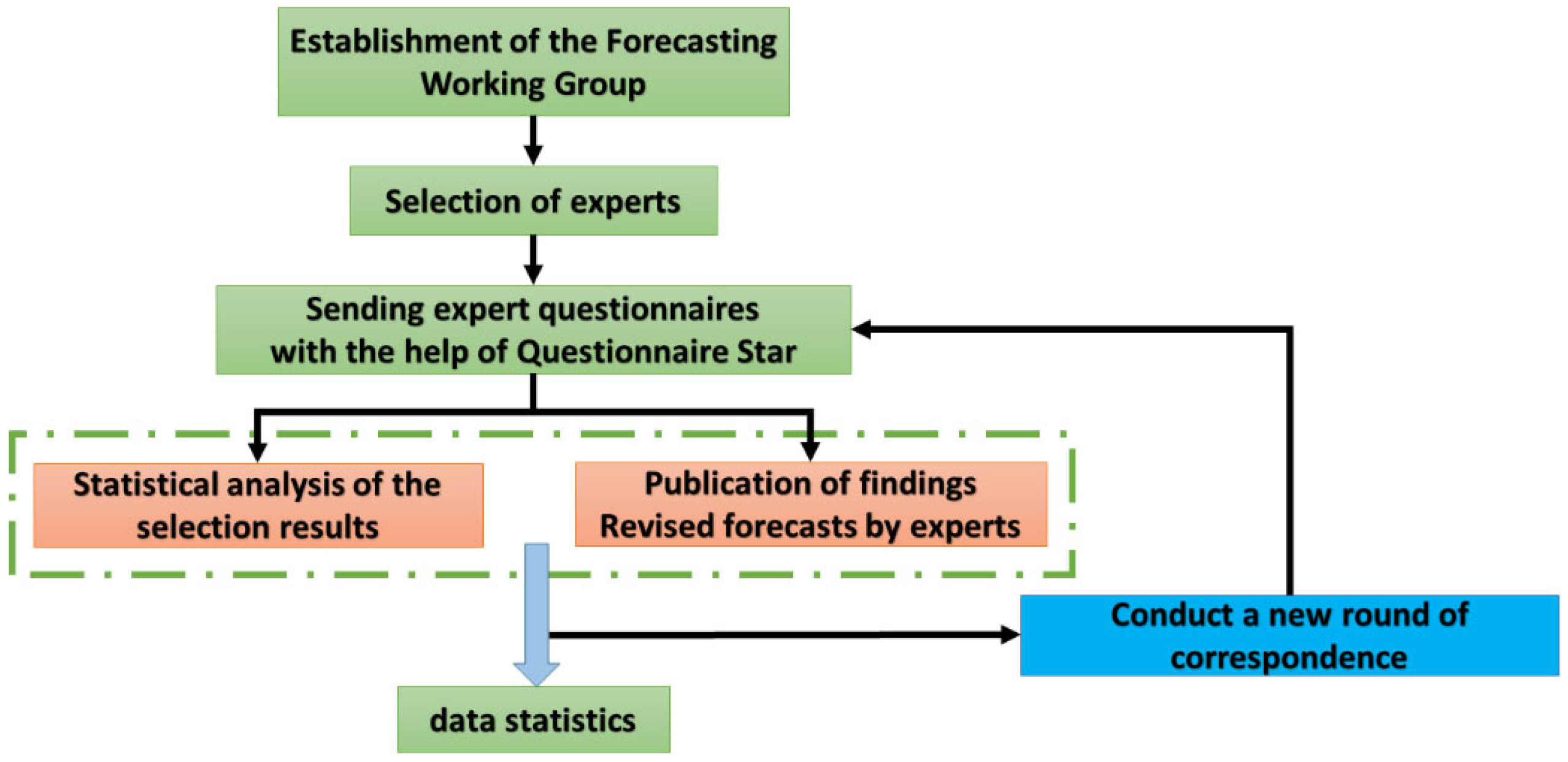
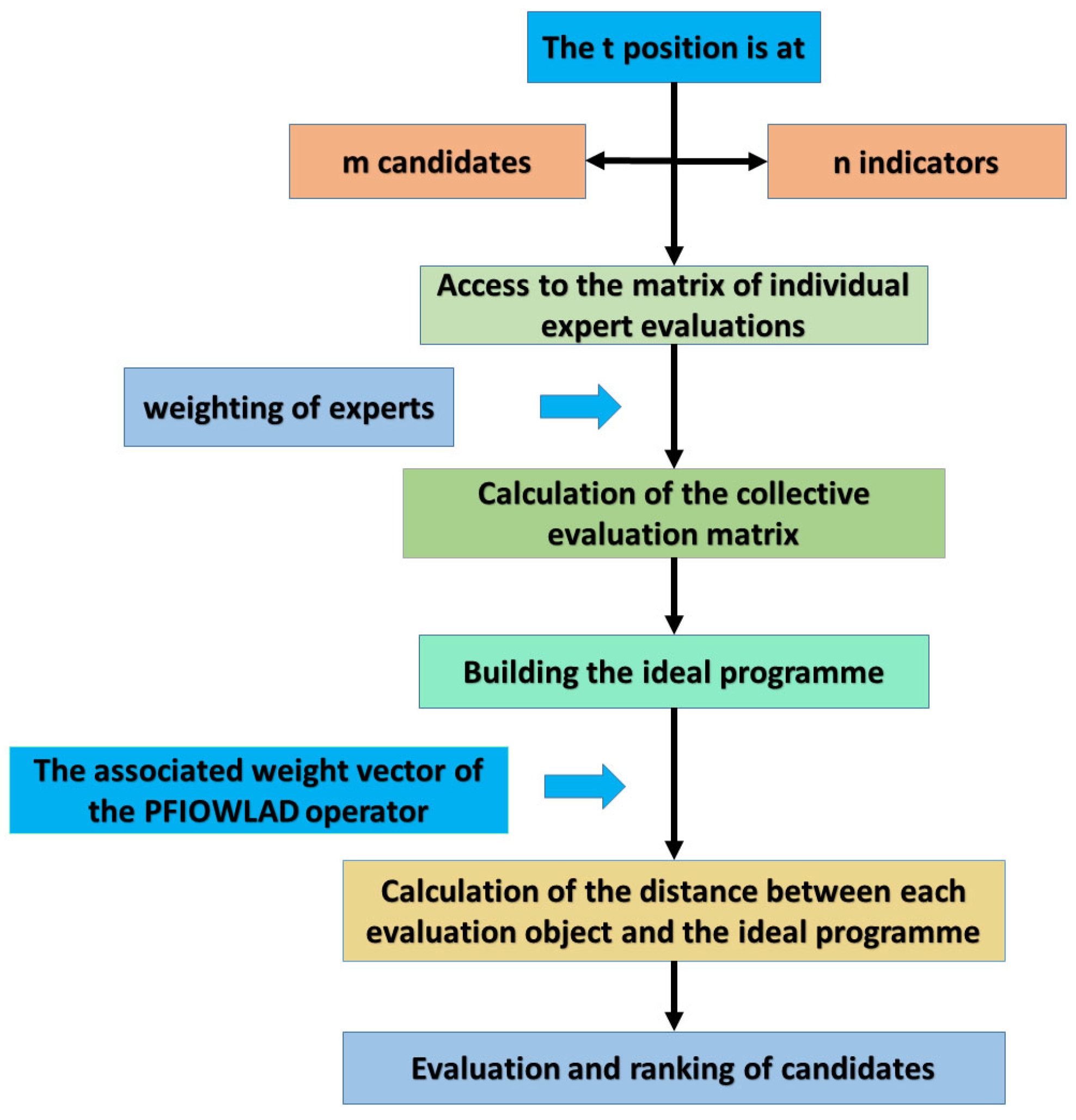

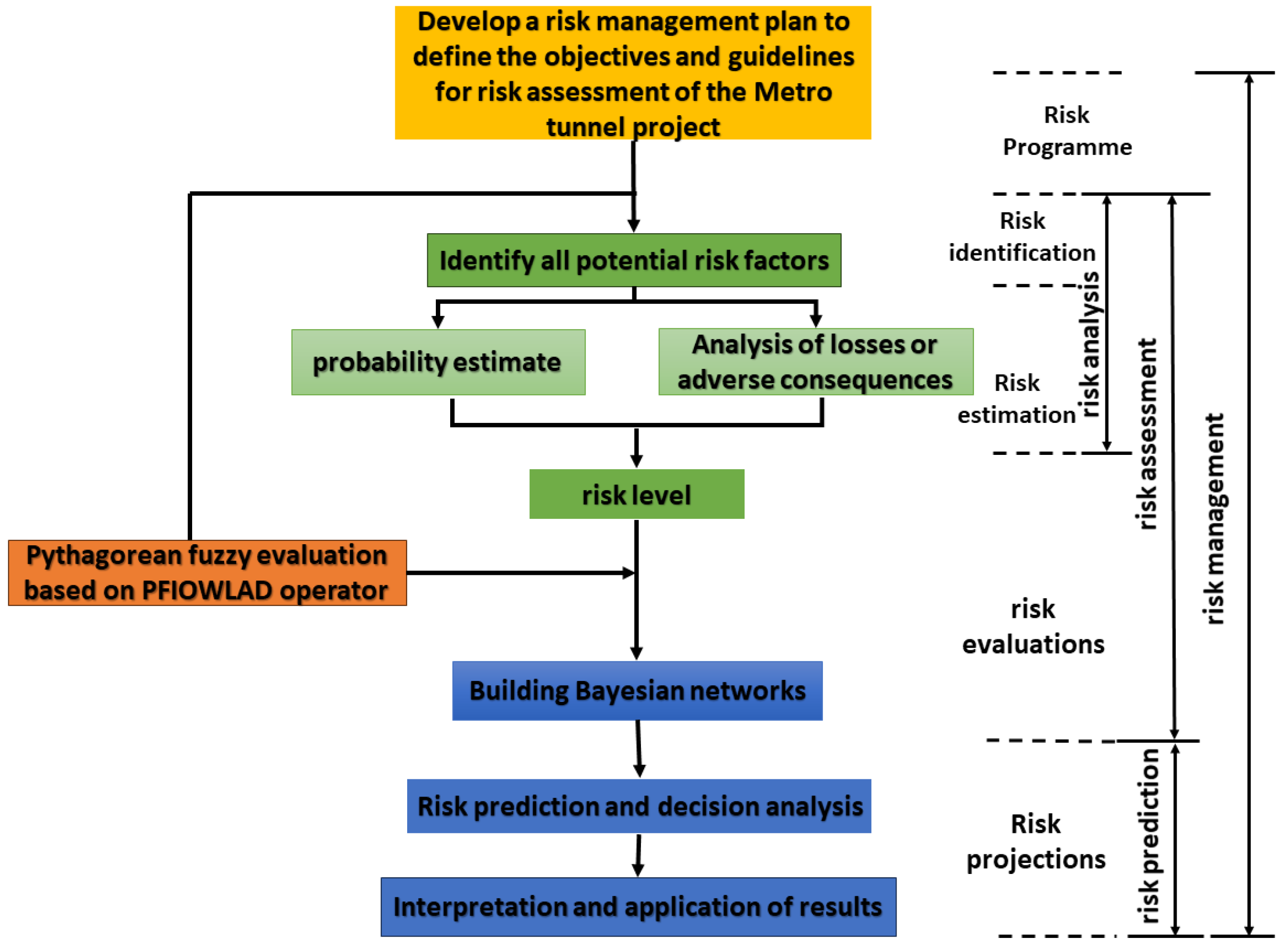
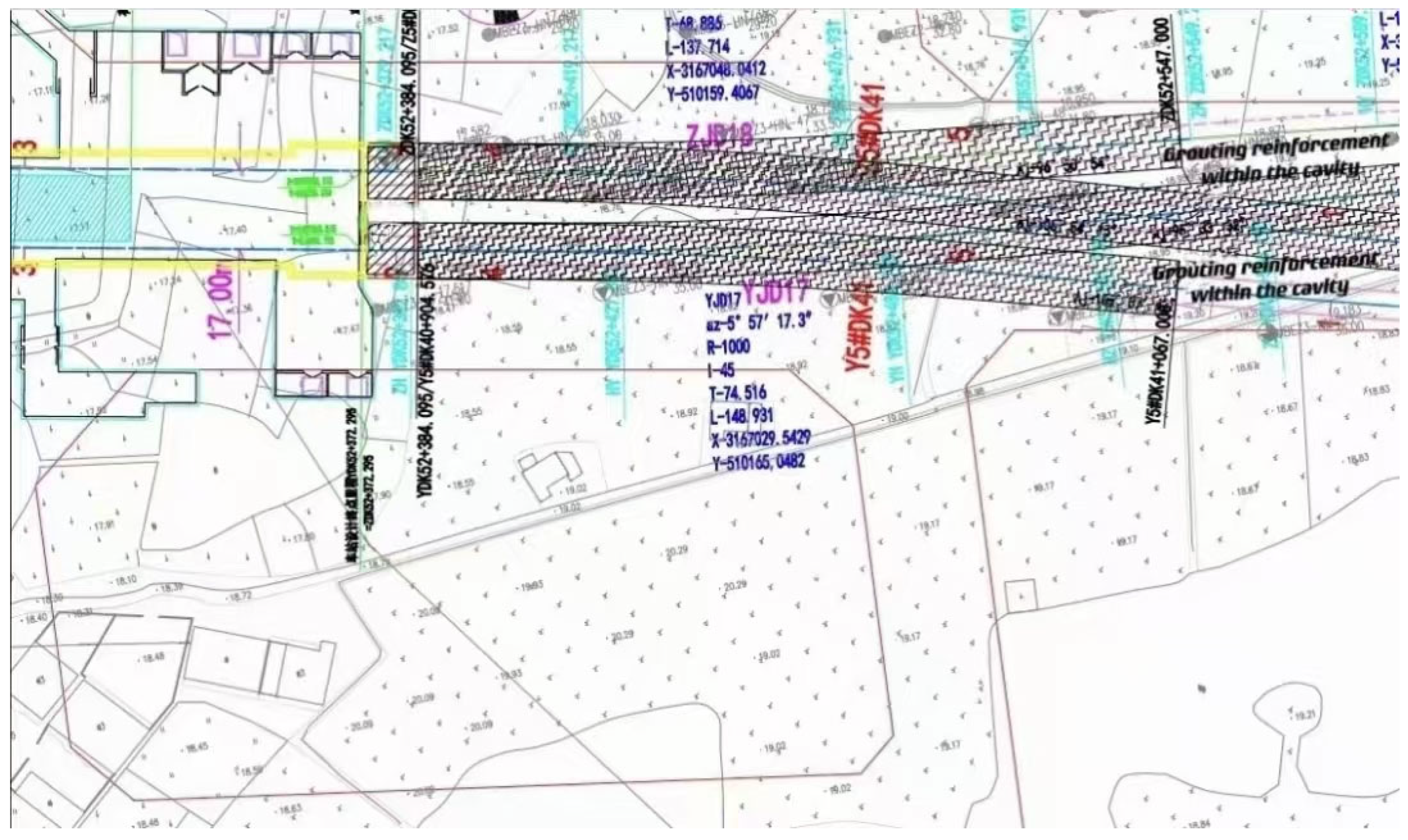


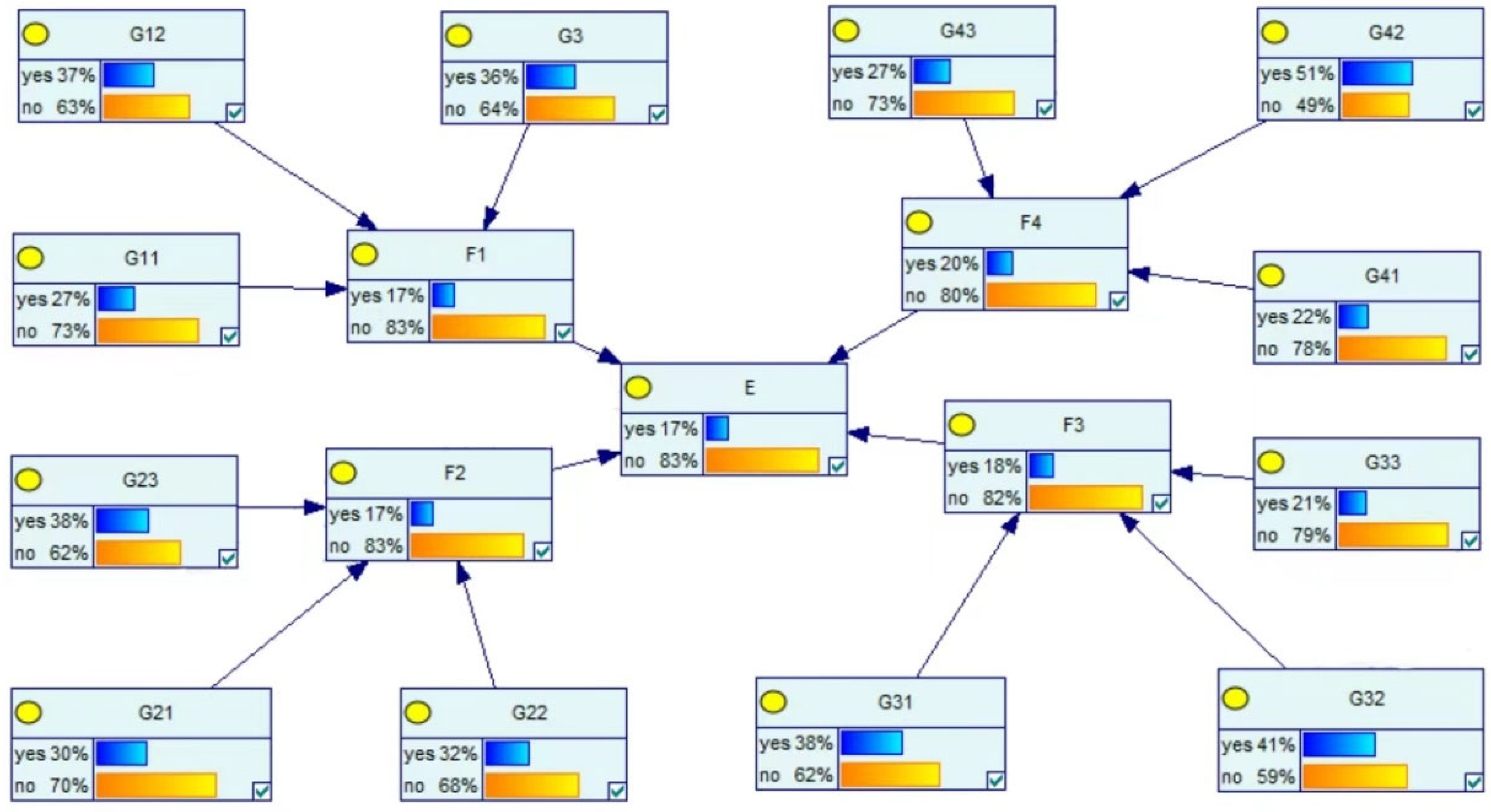
| <0.4, 0.6> | <0.8, 0.4> | <0.8, 0.1> | <0.7, 0.5> | ||
| <0.8, 0.5> | <0.3, 0.7> | <0.7, 0.4> | <0.2, 0.9> | ||
| <0.7, 0.1> | <0.8, 0.3> | <0.4, 0.8> | <0.8, 0.3> | ||
| <0.9, 0.3> | <0.7, 0.5> | <0.6, 0.7> | <0.1, 0.8> | ||
| <0.3, 0.4> | <0.8, 0.3> | <0.3, 0.9> | <0.7, 0.5> | ||
| <0.7, 0.5> | <0.8, 0.6> | <0.9, 0.4> | <0.2, 0.9> | ||
| <0.5, 0.2> | <0.5, 0.7> | <0.3, 0.5> | <0.9, 0.3> | ||
| <0.4, 0.7> | <0.9, 0.3> | <0.6, 0.5> | <0.4, 0.8> | ||
| <0.2, 0.7> | <0.8, 0.6> | <0.4, 0.6> | <0.7, 0.5> | ||
| <0.7, 0.3> | <0.4, 0.9> | <0.8, 0.4> | <0.4, 0.7> | ||
| <0.8, 0.5> | <0.6, 0.3> | <0.4, 0.7> | <0.7, 0.2> | ||
| <0.4, 0.6> | <0.2, 0.5> | <0.3, 0.5> | <0.2, 0.6> | ||
| <0.9, 0.3> | <0.7, 0.4> | <0.7, 0.2> | <0.7, 0.5> | ||
| <0.7, 0.2> | <0.4, 0.7> | <0.2, 0.8> | <0.3, 0.6> | ||
| <0.5, 0.3> | <0.6, 0.4> | <0.7, 0.6> | <0.1, 0.7> | ||
| <0.2, 0.7> | <0.4, 0.6> | <0.3, 0.4> | <0.8, 0.2> |
| <0.42, 0.53> | <0.78, 0.44> | <0.56, 0.43> | <0.70, 0.50> | |
| <0.73, 0.38> | <0.45, 0.74> | <0.67, 0.48> | <0.28, 0.78> | |
| <0.65, 0.28> | <0.64, 0.40> | <0.44, 0.67> | <0.65, 0.35> | |
| <0.51, 0.55> | <0.53, 0.48> | <0.45, 0.54> | <0.33, 0.62> |
| <0.73, 0.28> | <0.78, 0.40> | <0.67, 0.43> | <0.70, 0.35> |
| Hierarchy | A | B | C | D | E |
|---|---|---|---|---|---|
| Description of the incident | unlikely | infrequent | occasional | promise | frequent |
| interval probability | p < 0.01% | 0.01% ≤ p < 0.1% | 0.1% ≤ p < 1% | 1% ≤ p < 10% | p ≥ 10% |
| Risk Factors at the Indicator Layer | Weight Distribution | Weighted Ranking |
|---|---|---|
| Groundwater distribution | 0.011 | 10 |
| Stratigraphic lithology | 0.015 | 7 |
| Soil bearing capacity | 0.014 | 8 |
| Support system normative | 0.128 | 4 |
| Rationalization of earthwork methods | 0.128 | 4 |
| Means of detection validity | 0.144 | 3 |
| Construction site safety management | 0.199 | 2 |
| Engineering quality management effectiveness | 0.209 | 1 |
| Emergency preparedness | 0.102 | 5 |
| Traffic control situation | 0.012 | 9 |
| Neighbouring building impact assessment | 0.025 | 6 |
| Public security risk analysis | 0.014 | 8 |
Disclaimer/Publisher’s Note: The statements, opinions and data contained in all publications are solely those of the individual author(s) and contributor(s) and not of MDPI and/or the editor(s). MDPI and/or the editor(s) disclaim responsibility for any injury to people or property resulting from any ideas, methods, instructions or products referred to in the content. |
© 2024 by the authors. Licensee MDPI, Basel, Switzerland. This article is an open access article distributed under the terms and conditions of the Creative Commons Attribution (CC BY) license (https://creativecommons.org/licenses/by/4.0/).
Share and Cite
Wang, Z.; Jiang, T.; Li, Z. Risk Assessment of Underground Tunnel Engineering Based on Pythagorean Fuzzy Sets and Bayesian Networks. Buildings 2024, 14, 2897. https://doi.org/10.3390/buildings14092897
Wang Z, Jiang T, Li Z. Risk Assessment of Underground Tunnel Engineering Based on Pythagorean Fuzzy Sets and Bayesian Networks. Buildings. 2024; 14(9):2897. https://doi.org/10.3390/buildings14092897
Chicago/Turabian StyleWang, Zhenhua, Tiantian Jiang, and Zhiyong Li. 2024. "Risk Assessment of Underground Tunnel Engineering Based on Pythagorean Fuzzy Sets and Bayesian Networks" Buildings 14, no. 9: 2897. https://doi.org/10.3390/buildings14092897






